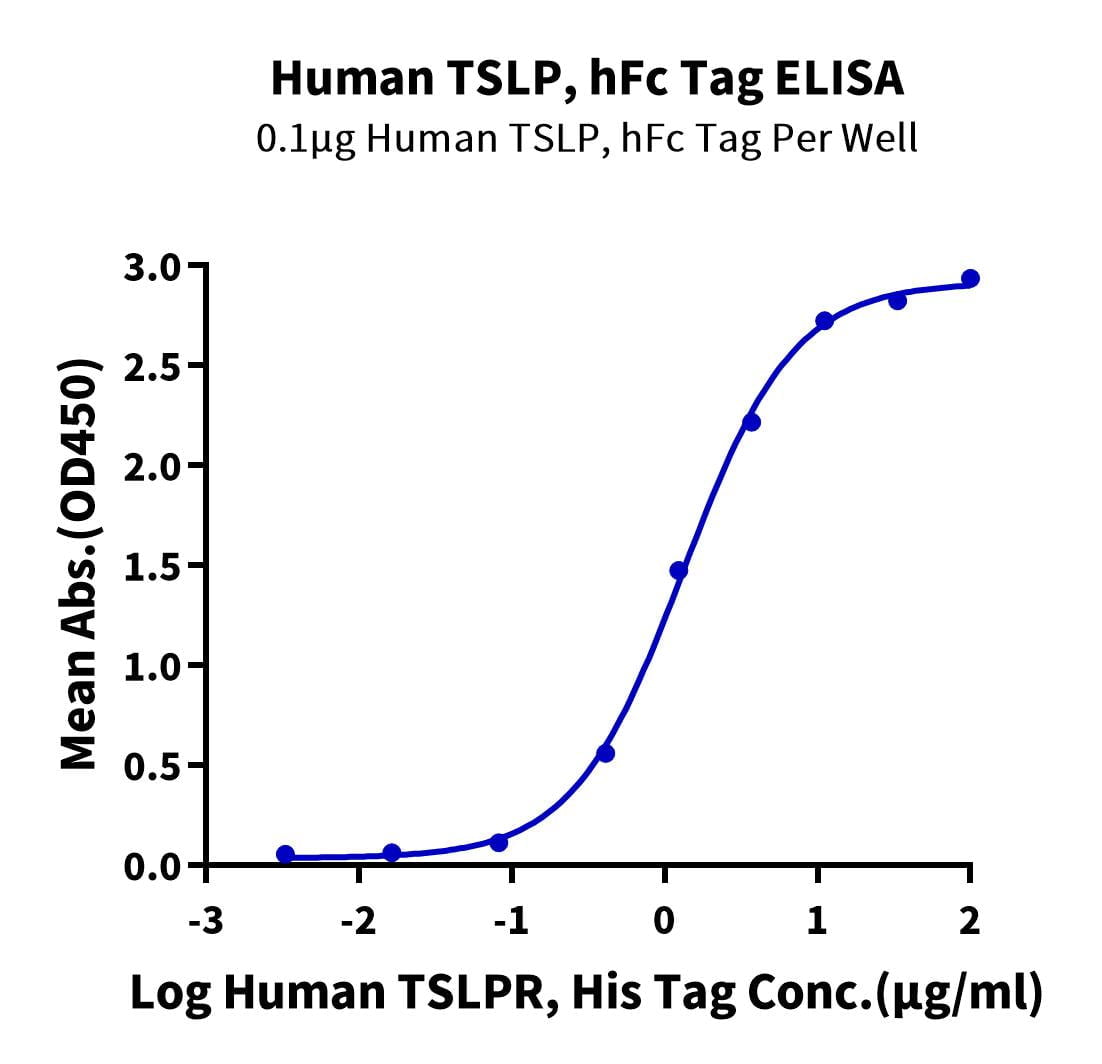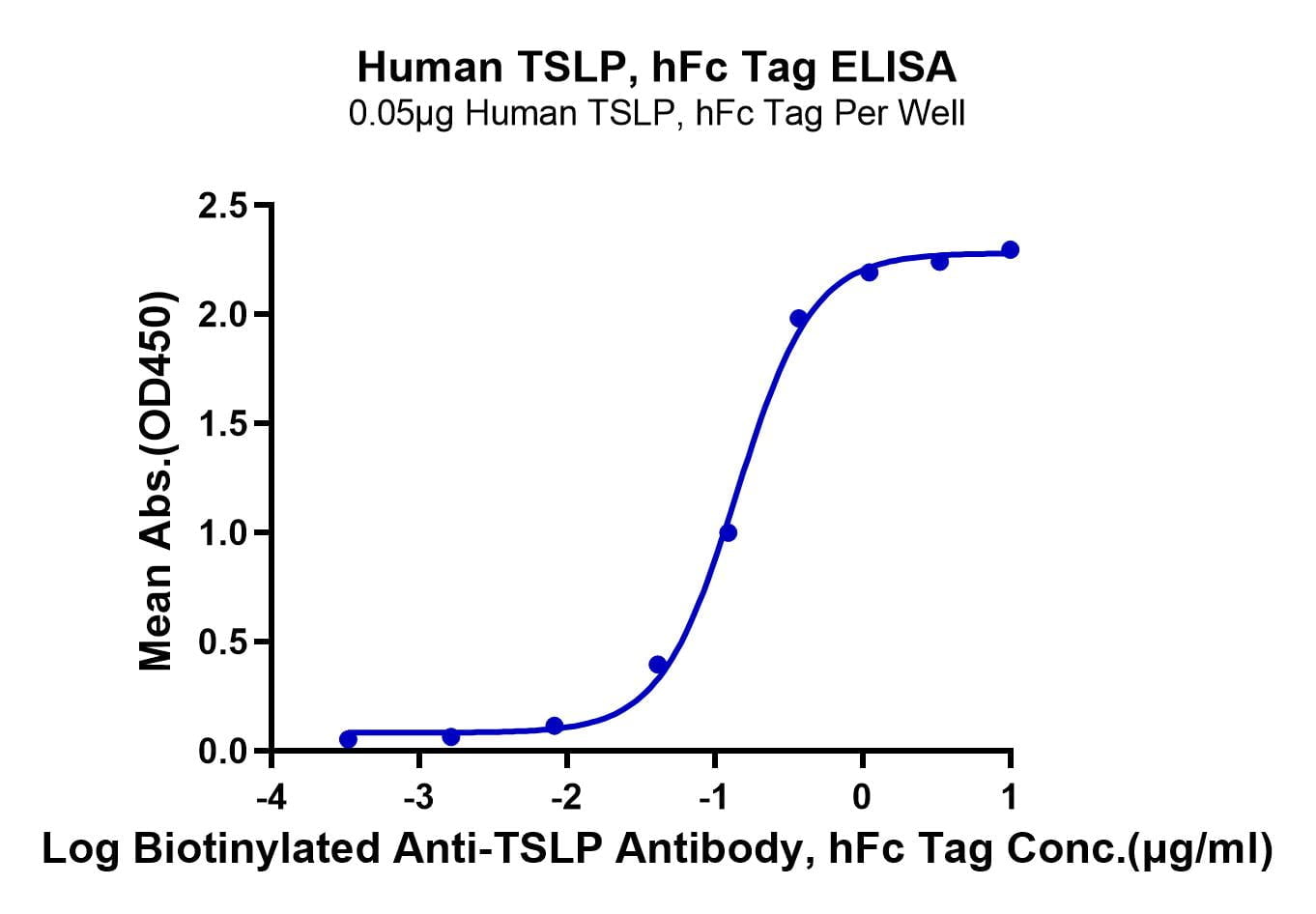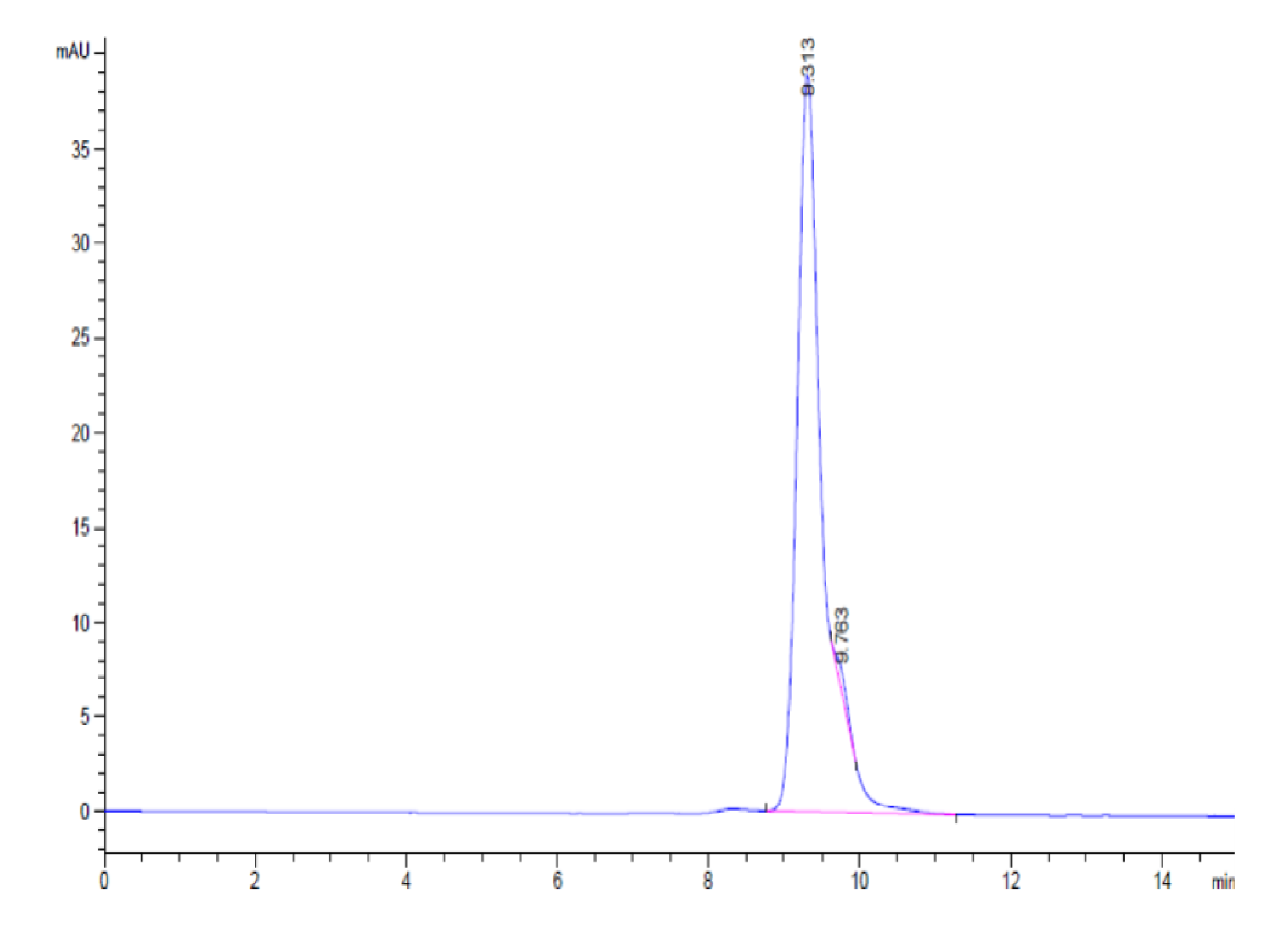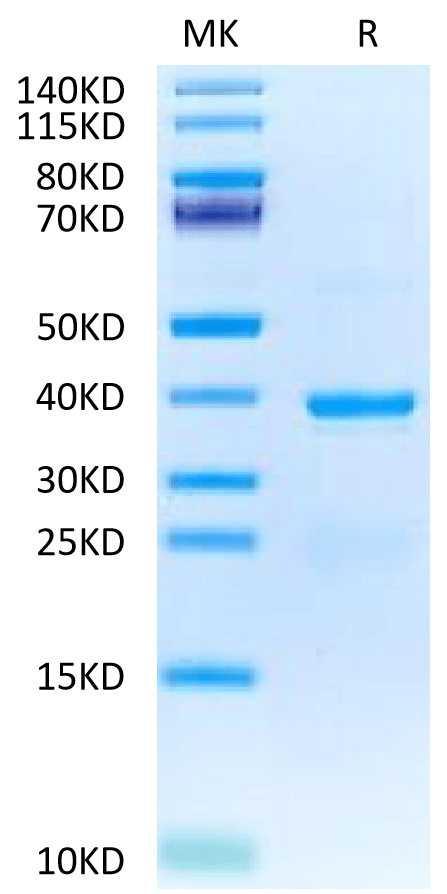| Weight | 1 lbs |
|---|---|
| Dimensions | 9 × 5 × 2 in |
| accession | Q969D9 |
| express system | HEK293 |
| product tag | C-hFc |
| purity | > 95% as determined by Tris-Bis PAGE;> 95% as determined by HPLC |
| background | Thymic Stromal Lymphopoietin (TSLP) was originally identified as an activity from the conditioned medium of a mouse thymic stromal cell line that promoted the development of B cells. Cytokine that induces the release of T-cell-attracting chemokines from monocytes and, in particular, enhances the maturation of CD11c dendritic cells. Can induce allergic inflammation by directly activating mast cells. |
| molecular weight | The protein has a predicted MW of 41.69 kDa. Due to glycosylation, the protein migrates to 38-42 kDa based on Tris-Bis PAGE result. |
| available size | 100 µg, 500 µg |
| endotoxin | Less than 1EU per μg by the LAL method. |
Human TSLP Protein 2558
$315.00 – $1,050.00
Summary
- Expression: HEK293
- Functional: Yes (ELISA)
- Amino Acid Range: Tyr29-Gln159
Human TSLP Protein 2558
| protein |
|---|
| Size and concentration 100, 500µg and lyophilized |
| Form Lyophilized |
| Storage Instructions Valid for 12 months from date of receipt when stored at -80°C. Recommend to aliquot the protein into smaller quantities for optimal storage. Please minimize freeze-thaw cycles. |
| Storage buffer Shipped at ambient temperature. |
| Purity > 95% as determined by Tris-Bis PAGE |
| target relevance |
|---|
| Thymic Stromal Lymphopoietin (TSLP) was originally identified as an activity from the conditioned medium of a mouse thymic stromal cell line that promoted the development of B cells. Cytokine that induces the release of T-cell-attracting chemokines from monocytes and, in particular, enhances the maturation of CD11c dendritic cells. Can induce allergic inflammation by directly activating mast cells. |
| Protein names Thymic stromal lymphopoietin |
| Gene names TSLP,TSLP |
| Mass 9606Da |
| Function [Isoform 1]: Cytokine that induces the release of T-cell-attracting chemokines from monocytes and, in particular, enhances the maturation of CD11c(+) dendritic cells. Can induce allergic inflammation by directly activating mast cells.; [Isoform 2]: May act as an antimicrobial peptide in the oral cavity and on the skin. |
| Catalytic activity #N/A |
| Subellular location Secreted . |
| Tissues Isoform 1 is expressed in a number of tissues including heart, liver and prostate. Isoform 2 is the predominant form in keratinocytes of oral mucosa, skin and in salivary glands. It is secreted into saliva. |
| Structure Interacts with a receptor composed of CRLF2 and IL7R. Binding of TSLP to CRLF2/TSLPR is a mechanistic prerequisite for recruitment of IL7R to the high-affinity ternary complex. |
| Target Relevance information above includes information from UniProt accession: Q969D9 |
| The UniProt Consortium |
Data
Publications
Publications
| pmid | title | authors | citation |
|---|---|---|---|
| We haven't added any publications to our database yet. | |||
Protocols
| relevant to this product |
|---|
Documents
| # | ||
|---|---|---|
| Please enter your product and batch number here to retrieve product datasheet, SDS, and QC information. | ||


















